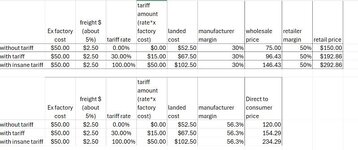I had an interesting conversation with the head sewing machine maintenance dude at a large scale west coast based outdoor products manufacturer. When a new product line comes out he orders the equipment, installs machines, troubleshoots sewing issues and trains the operators. Equipment wise, adding capacity is fairly straight forward with electricians running more power and lights into empty warehouse space, bathrooms get built to match the number of people, necessary code inspections and requirements, and the generic sewing related stuff goes in fairly quickly. Specialty folders and binding can require some time to fine tune, but they are used to making things work so it’s not rocket science. Training new operators is a few days to a week on an old machine getting over the fear of an industrial going a few thousand finger stabs per minute, then at least a few weeks doing basic sewing tasks until they graduate onto the main floor.
A company I worked for added a few bathrooms, break rooms and offices to warehouse space and you have the architect’s timeline of a month or two, building plan delays of another month, plumbers have concrete to cut and new waste lines installed, inspected and concrete patched. Then a few days to a few weeks of rough framing followed by plumbing, electrical, and venting rough in and an inspection. Sheetrock, painters, finish plumbing and electrical and an inspection. Stall and hardware installs, doors and misc. followed by a final. From calling the architect until the first employee takes a dump is 4 months if you’re lucky. The last one I was a part of was delayed 3 months because the new electrical service install was backed up, and another month because the building department was backed up.
Doing junior high school math, that’s 4 to 9 months before the first practice stitch, and another month before new hires can be fully functional. If there’s a flood of new sewing, that makes finding the bodies to do it more expensive, but he said they are like hiring warehouse workers - just increase the pay and plenty of them will come out of the woodwork. Still, nobody is getting rich doing warehouse work or commercial sewing.


